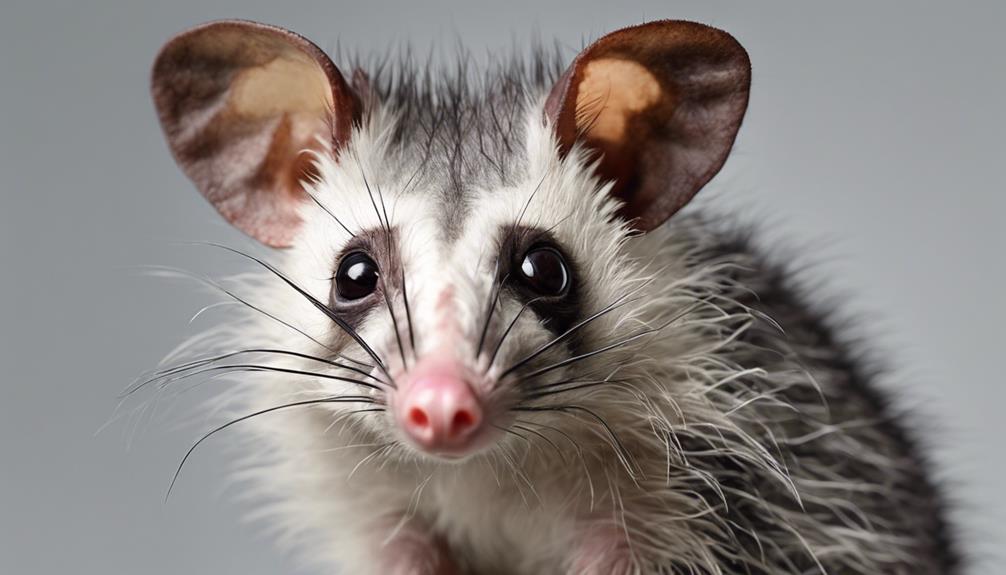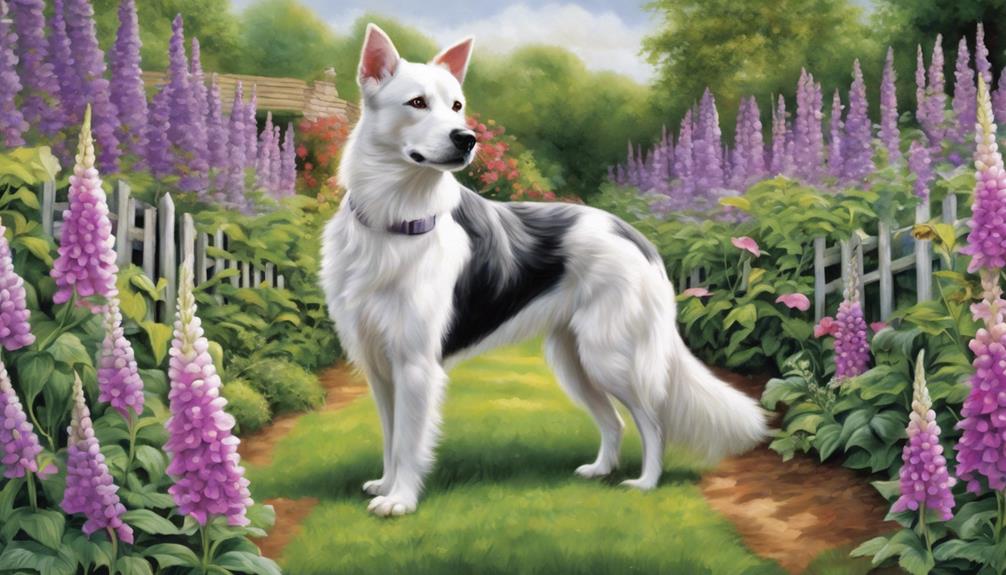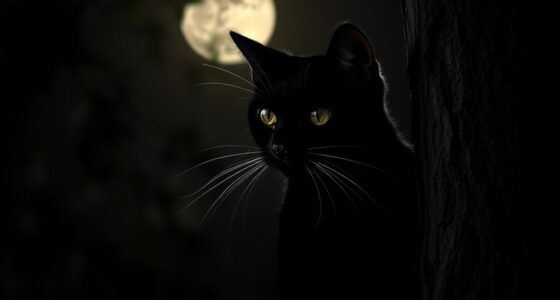If you are interested in animals similar to possums, there are some fascinating species to learn about. The Sugar Glider, known for its prehensile tail, is native to Australia and Indonesia. The Ringtail Cat, a member of the raccoon family, has a distinct banded tail for balance and communication. Bushbabies, which can be found in Africa, are nocturnal primates with specialized adaptations for leaping. The Kinkajou from Central and South America has a long prehensile tail and sharp claws for climbing. Cuscus, arboreal marsupials in Australia and the Pacific, have unique adaptations for living in trees. There are many more interesting species to discover!
Key Takeaways
- Sugar Glider: Prehensile tail, endangered, from Australia and Indonesia.
- Ringtail Cat: Banded tail, part of raccoon family, sharp claws for climbing.
- Bushbaby: Nocturnal, leaping abilities, vocal communication, found in Africa.
- Kinkajou: Prehensile tail, fruit eater, nocturnal with forward-facing eyes.
- Cuscus: Arboreal marsupials, herbivorous, nocturnal, found in Australia and Pacific Islands.
Sugar Glider
Sugar gliders, with their ability to gracefully glide through the air, are enchanting nocturnal marsupials native to Australia and Indonesia. These medium-sized mammals possess a remarkable feature – their prehensile tails, which aid in balancing and steering their aerial adventures.
Despite their mesmerizing presence, sugar gliders face a concerning reality; they're critically endangered in the wild due to habitat loss and illegal pet trade practices. As a responsible pet owner, it's vital to understand the importance of preserving the natural habitats of these fascinating creatures and to avoid contributing to the illegal wildlife trade.
Ringtail Cat
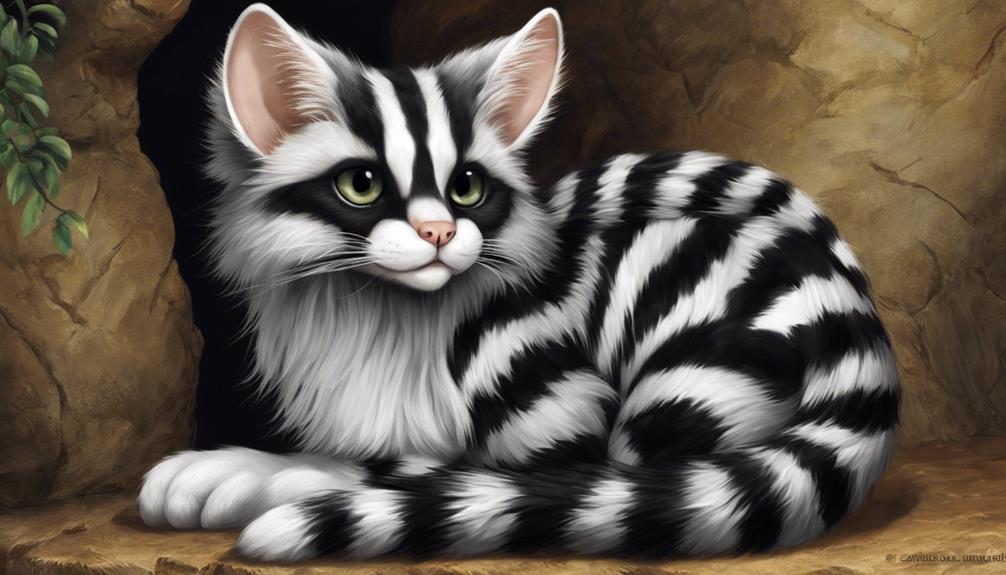
Ringtail cats, often mistaken for felines, are actually part of the raccoon family. Their distinctive feature is the long, banded tail that aids in balance and communication.
Understanding their unique physical traits, habitat preferences, and conservation needs can help us appreciate and protect these fascinating creatures.
Unique Physical Features
With a long, bushy tail adorned with alternating black and white rings, the Ringtail Cat exhibits distinctive physical features that set it apart from other animals resembling possums. Here are some unique characteristics that make the Ringtail Cat stand out:
- Contrasting Colors: The black and white rings on their bushy tail create a striking visual pattern.
- Large Eyes and Pointed Snout: Similar to a cat, their facial features include large, round eyes and a pointed snout.
- Lighter Underside: The fur on their underside is lighter than the rest of their body, adding to their unique appearance.
- Sharp, Curved Claws: Their feet are equipped with sharp, curved claws that aid in climbing and gripping onto branches.
These features contribute to the Ringtail Cat's agility and ability to thrive in their natural habitat.
Habitat and Behavior
Traversing the rugged terrain of North America, Ringtail cats demonstrate exceptional climbing skills, utilizing their long, prehensile tails for balance and agility. These fascinating creatures are primarily found in Mexico and the southwestern United States, where they spend most of their time in trees, hunting for insects, small mammals, and birds under the cover of night.
Ringtail cats are solitary and nocturnal, with a diet that includes fruits and vegetation. Remarkably, they've a unique social structure where males have overlapping territories with several females. While they may look similar to raccoons, Ringtail cats are a separate species with their own distinct behaviors and habitats.
It's intriguing to note that despite being closely related, raccoons are much larger than Ringtail cats.
Conservation Status
Amid ongoing conservation efforts, the Ringtail Cat maintains a stable population trend and is currently listed as Least Concern by the IUCN Red List.
- Two species: The Ringtail Cat, despite its name, isn't a feline but belongs to the raccoon family, making it one of the two species in its genus Bassariscus.
- Million years ago: The evolutionary history of the Ringtail Cat traces back millions of years, with fossil records indicating their presence in North America.
- Individuals left: Despite facing some habitat loss and human interference, Ringtail Cats continue to thrive, with conservation efforts ensuring their populations remain healthy.
- Conserving habitats: Preserving diverse habitats like forests, deserts, and urban areas is essential to safeguarding the Ringtail Cat's future and minimizing human-wildlife conflicts.
Bushbaby
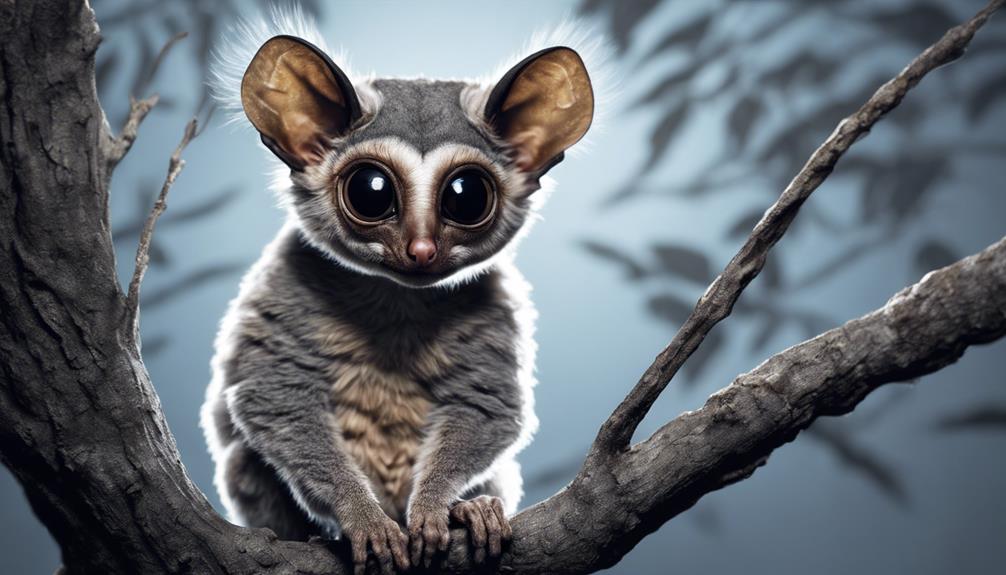
Bushbabies, also known as galagos, are fascinating creatures found in Africa. They possess unique behavior traits, inhabit specific habitats, and have distinct diet preferences.
Let's explore the intriguing world of bushbabies and learn more about their nocturnal lifestyle and survival strategies.
Bushbaby Behavior Traits
Known for their distinctive large eyes and excellent night vision, bushbabies are small, nocturnal primates with specialized adaptations for leaping and balancing. Observing bushbabies in their natural habitat reveals fascinating behavior traits such as:
- Vocal Communication: Bushbabies use various vocalizations like chirps, whistles, and screams to mark territory and locate potential mates.
- Diverse Diet: Their diet includes insects, fruits, gums, and tree sap, showcasing their adaptability to different food sources.
- Solitary or Group Living: Bushbabies can be solitary creatures or live in small family groups, with some species forming monogamous pairs.
- Agile Movement: These primates exhibit agile movements, utilizing their long tails for balance and strong hind legs for impressive leaping abilities.
These behaviors contribute to the bushbabies' survival and success in their environments.
Bushbaby Habitat Facts
Exploring the diverse habitats of bushbabies reveals their remarkable adaptation to varying environments in sub-Saharan Africa. These nocturnal primates can be found in savannas, lowland forests, and bushlands. Their specialized adaptations, like strong hind legs for jumping and excellent night vision, make them well-suited for these habitats. Bushbabies are known for their distinctive call that sounds like a crying baby and their ability to leap long distances. In addition to their unique characteristics, they play an important role in their ecosystems by dispersing seeds, aiding in the regeneration of plant species. Below is a table highlighting some fascinating facts about bushbaby habitats:
| Habitat Type | Description |
|---|---|
| Savannas | Open grasslands with scattered trees |
| Lowland Forests | Dense forests with rich biodiversity |
| Bushlands | Scrublands with bushes and shrubs |
| Nocturnal | Active during the night |
| Seed Dispersers | Aid in plant species regeneration |
Bushbaby Diet Preferences
Feasting on a diverse array of insects, fruits, tree gums, and small animals, bushbabies exhibit a versatile diet that varies depending on their species and habitat's food availability.
Here are some interesting facts about the bushbaby diet preferences:
- Bushbabies primarily feed on insects, such as crickets, grasshoppers, and caterpillars, which are essential protein sources.
- Fruits are also a significant part of their diet, providing vital vitamins and nutrients.
- Tree gums serve as a source of carbohydrates and energy for these small primates.
- Their ability to consume a wide range of food items contributes to their adaptability in various environments, showcasing their resourcefulness in finding sustenance.
Kinkajou
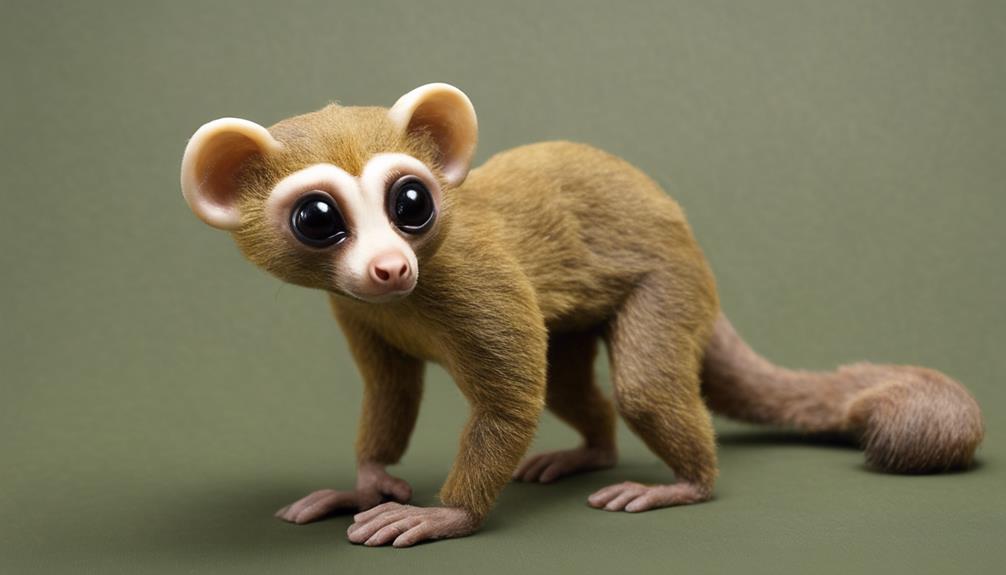
With its long, prehensile tail and sharp claws, the Kinkajou effortlessly navigates the rainforest canopy in search of its fruit-based diet. These intriguing creatures, also known as 'honey bears,' are native to Central and South America. Their tail aids in moving through trees, while their claws help them climb and grip branches. Here is a visual representation of some interesting facts about Kinkajous:
| Fact | Description |
|---|---|
| Diet | Primarily fruits, nectar, with occasional insects and small animals. |
| Nocturnal Habits | Large, forward-facing eyes for low-light vision, active during the night. |
| Defense Mechanism | Can be aggressive when threatened, using sharp teeth and claws for defense. |
These nocturnal animals may look cute, but they are equipped to defend themselves when needed. Their unique characteristics and behaviors make them a fascinating species to learn about in the diverse ecosystem of the rainforest.
Cuscus
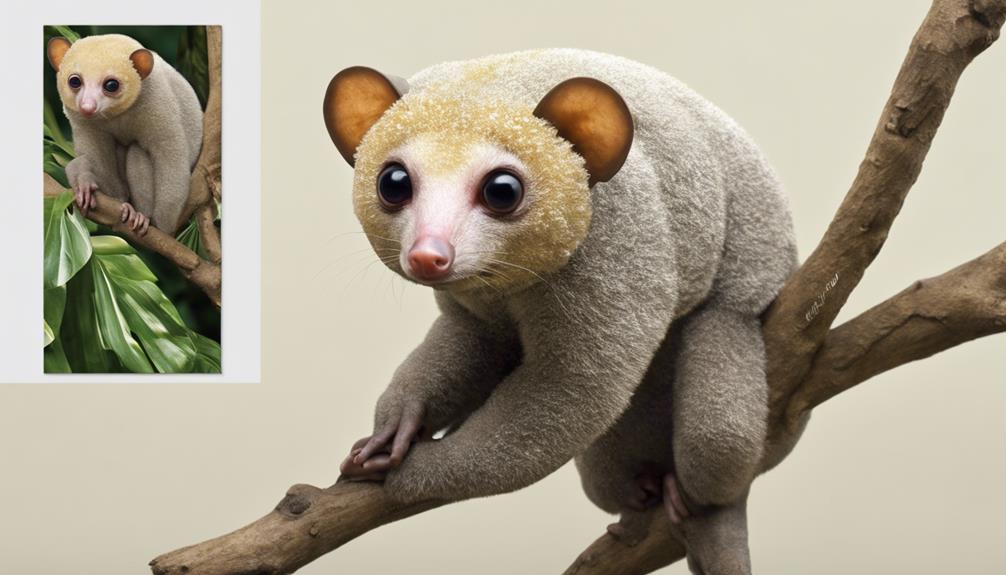
Cuscus, a type of marsupial, can be found in Australia and New Guinea. They've a unique feature – a prehensile tail that helps them climb and hang in trees.
Their diet includes fruits, leaves, and small animals, and they're known for being gentle creatures.
Cuscus Appearance Features
Sporting a round face with large eyes and rounded ears, the Cuscus marsupials found in New Guinea and parts of Australia display a distinctive appearance. Here are some key features of the Cuscus:
- Prehensile Tail: Cuscus have a unique tail that's prehensile, meaning it can grasp objects like branches, aiding them in climbing and hanging from trees.
- Variety of Fur Colors: Their fur can vary in color from gray to brown to reddish, helping them blend into their forest habitats.
- Arboreal Lifestyle: Cuscus are primarily arboreal creatures, spending most of their time in trees where they're well-adapted to move around and find food.
- Distinct Facial Features: With their round face, large eyes, and rounded ears, Cuscus have a charming and distinctive appearance that sets them apart from other marsupials.
Cuscus Habitat and Diet
In the lush rainforests of New Guinea and northern Australia, arboreal marsupials known as Cuscus sustain themselves primarily on a diet consisting of leaves, fruits, flowers, and occasionally insects. Cuscus play an essential role in seed dispersal within their forest habitats. Their prehensile tail aids in moving through trees and maintaining balance while foraging. These slow-moving creatures blend seamlessly into the canopy, camouflaging with their surroundings. Let's explore the habitat and diet of Cuscus through the table below:
| Cuscus Habitat | Cuscus Diet |
|---|---|
| Lush Rainforests | Leaves |
| New Guinea & Northern Australia | Fruits |
| Arboreal Living | Flowers |
| Canopy | Occasionally Insects |
| Seed Dispersal Role |
Quokka
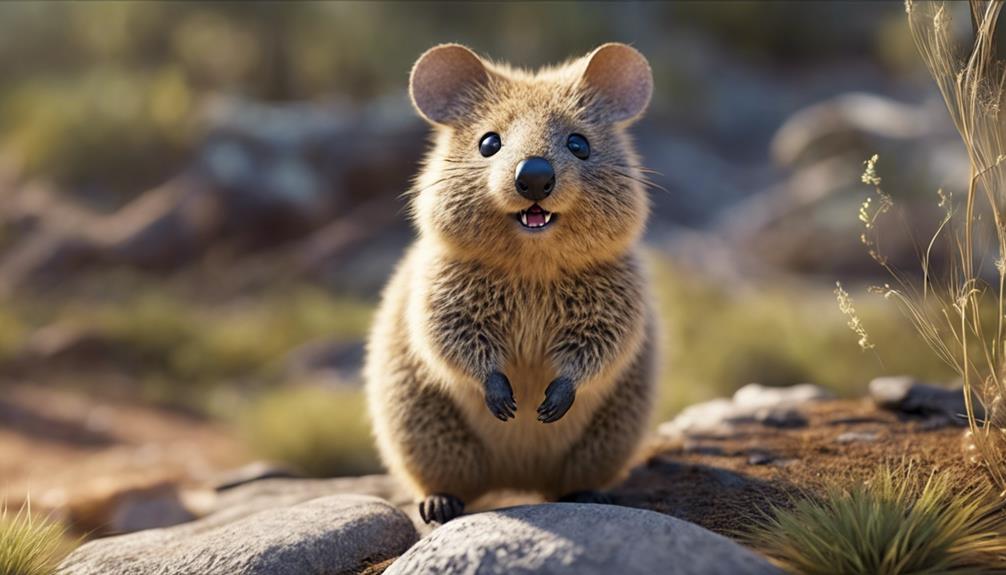
Found on Rottnest Island and Bald Island in Western Australia, the Quokka is renowned as the happiest animal in the world. Here are some fascinating facts about these adorable creatures:
- Nocturnal Herbivores: Quokkas primarily feed on grasses, leaves, and succulents, which contribute to their friendly and approachable nature.
- Population Decline: Unfortunately, Quokka populations have decreased due to habitat destruction and the introduction of predators in their limited range, emphasizing the need for conservation efforts.
- Tourist Attractions: Quokkas have become a tourist attraction, drawing people who seek selfies with these photogenic and smiley animals due to their irresistibly cute demeanor.
- Conservation Efforts: Various initiatives are in place to protect the Quokka and preserve their habitat, aiming to prevent further declines in their population.
These engaging facts provide insight into the unique characteristics and challenges faced by Quokkas, making them a species worth learning more about and protecting for future generations.
Olinguito
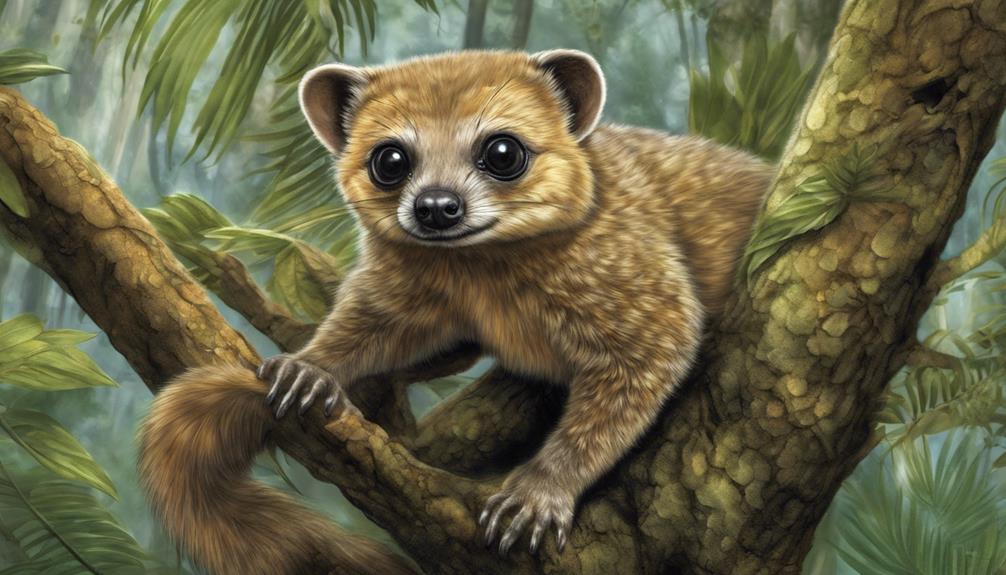
The Olinguito, a small, furry mammal native to the cloud forests of Colombia and Ecuador, was officially recognized as a distinct species in 2013. These charming creatures are part of the raccoon family but bear a striking resemblance to a mix between a house cat and a teddy bear. Olinguitos primarily feed on fruit, nectar, and insects in their forest habitat. They are solitary animals, and females give birth to one offspring at a time.
| Olinguito Facts | |
|---|---|
| Habitat | Cloud forests |
| Diet | Fruit, nectar, insects |
| Reproduction | Solitary, one offspring |
Olinguitos are known for their nocturnal habits, making them elusive and fascinating to study. Their discovery in 2013 marked a significant milestone in the world of zoology, showcasing the continuous exploration and discovery of new species on our planet. The Olinguito's unique appearance and behavior make it an intriguing subject of research and a delightful addition to the animal kingdom.
Tarsier
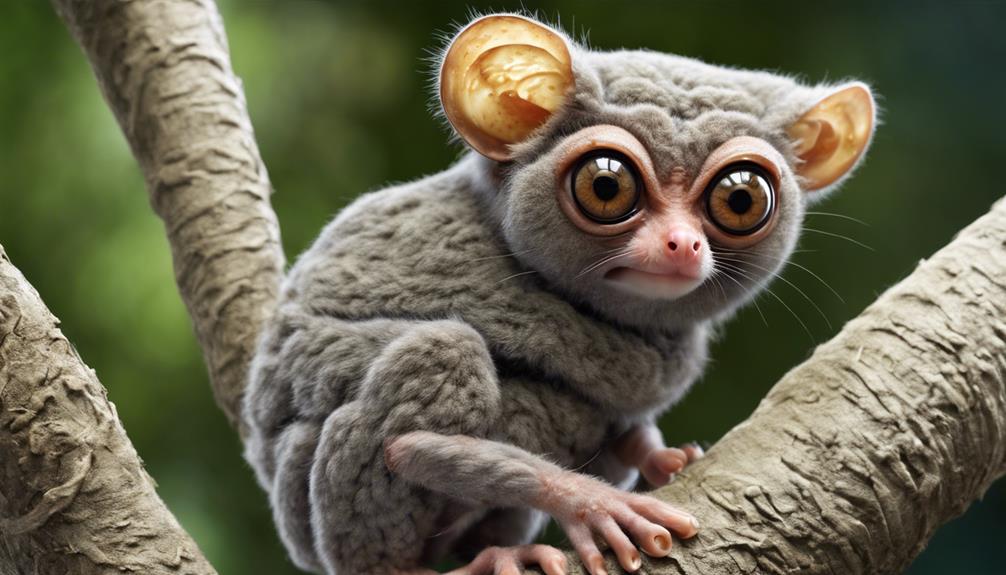
With their large eyes and unique vocalizations, tarsiers captivate observers in the forests of Southeast Asia. These small primates are fascinating creatures that exhibit remarkable characteristics:
- Physical Features: Tarsiers have big eyes, long hind limbs, and a lengthy tail, making them distinct from other primates.
- Habitat: Found primarily in the islands of Borneo, Sumatra, and the Philippines, tarsiers inhabit dense forests where they can thrive in their natural environment.
- Diet: These carnivorous animals feed on insects like crickets, beetles, and grasshoppers, showing their preference for a protein-rich diet.
- Communication: Tarsiers communicate through high-pitched calls, using unique vocalizations that set them apart from other animals in the region.
Observing tarsiers in their natural habitat provides a glimpse into the wonders of the animal kingdom. Their specialized ankle bone enables them to leap incredible distances, showcasing their agility and adaptation to their environment.
Aye-Aye
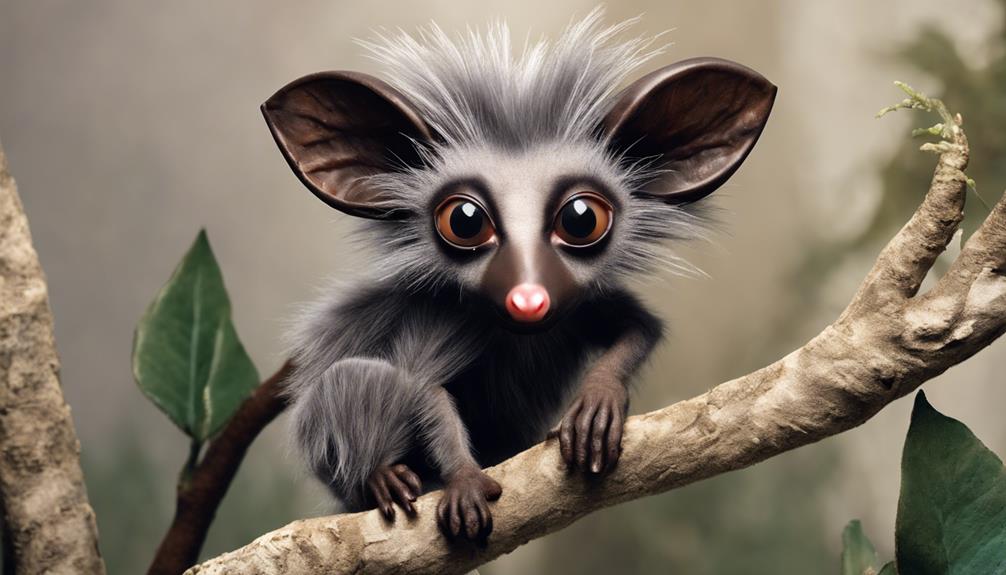
Tarsiers' distinctive features in the forests of Southeast Asia captivate observers, but now let's explore the fascinating world of the Aye-Aye, a lemur species native to Madagascar. The Aye-Aye stands out with its striking appearance, boasting large eyes, bat-like ears, and a remarkable long, thin middle finger specifically adapted for extracting insects from tree bark. Despite its captivating features, the Aye-Aye faces challenges due to superstitions in some Malagasy cultures, where it's considered a symbol of bad luck, leading to persecution and habitat destruction.
These nocturnal creatures spend their daylight hours nestled in nests crafted from leaves and branches, emerging under the moonlight to hunt for their favorite insect meals. To safeguard the Aye-Aye from extinction, conservation efforts are essential. Habitat preservation initiatives and captive breeding programs are in place to protect these unique lemurs and guarantee their survival for future generations to marvel at their extraordinary characteristics.
Flying Squirrel
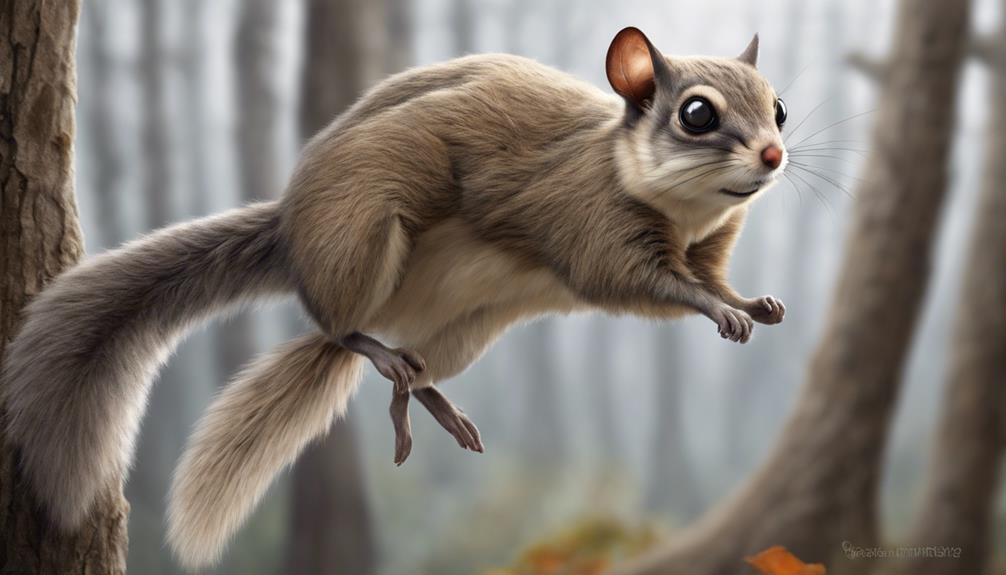
Catching a glimpse of a flying squirrel in action is a mesmerizing experience, showcasing their remarkable gliding abilities. Here are some fascinating facts about these unique creatures:
- Flying squirrels aren't true squirrels but are actually gliding mammals found in various parts of the world, from North America to Asia.
- They possess a specialized membrane called a patagium that extends from their wrists to their ankles, enabling them to glide gracefully through the air.
- These nocturnal creatures have large eyes adapted for low-light conditions, aiding them in their nightly adventures.
- Their diet consists of nuts, seeds, fruits, and insects, varying depending on the species and the environment they inhabit.
Witnessing a flying squirrel effortlessly navigate through the trees with its acrobatic aerial skills is a demonstration to the wonders of nature and the adaptability of these remarkable creatures.
Frequently Asked Questions
What Animal Is Similar to the Opossum?
A creature resembling the opossum is the Striped Possum, known for its unique traits like using an elongated fourth finger for feeding and emitting unpleasant odors for defense. Its distinct vocalizations add to its fascinating nature.
Which 5 Animals Are Marsupials?
There are five animals that are marsupials: kangaroos, wallabies, koalas, possums, and Tasmanian devils. These creatures give birth to underdeveloped young that continue to grow in a pouch. Their unique reproductive system sets them apart from other mammals.
What Is a Mini Kangaroo Looking Animal?
I'll tell you about the Lumholtz's tree-kangaroo. It's like a mini kangaroo and lives in Queensland. These unique animals are vulnerable due to habitat loss and climate change, so it's essential to protect them.
What Is a Bandicoot Look Like?
As I explore the description of a bandicoot, I envision a creature with a pointed snout and a hunched posture, skillfully using its front paws to unearth insects. These marsupials, with their keen senses, thrive in diverse Australian habitats.
Can Small Bugs That Look Like Miniature Praying Mantises Be Mistaken for Possums?
Yes, small bugs resembling praying mantises can be mistaken for possums due to their similar appearance from a distance. These tiny creatures, with their long, delicate limbs and slender bodies, can easily be confused with possums at first glance. However, upon closer inspection, their distinct features become more apparent.
Conclusion
To sum up, the animal kingdom is filled with fascinating creatures that resemble possums in various ways. From the acrobatic Sugar Glider to the mysterious Aye-Aye, each species has unique characteristics that make them stand out.
Just like how each person has their own special qualities that make them unique, these animals showcase the diversity and wonder of nature. So next time you see a possum or one of its look-alikes, take a moment to appreciate the beauty and complexity of the animal world.
